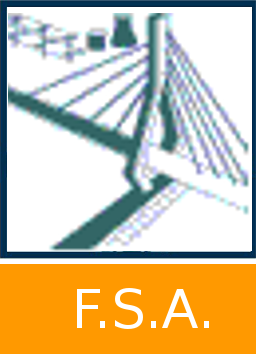Development of a meshing methodology for the mechanical sizing of low-pressure compressor components Integration Internship
Messens, Tom 
Promotor(s) :
Béchet, Eric 
Date of defense : 24-Jan-2025 • Permalink : http://hdl.handle.net/2268.2/22452
Details
| Title : | Development of a meshing methodology for the mechanical sizing of low-pressure compressor components Integration Internship |
| Translated title : | [fr] Mise en place d'une méthodologie de maillage dans le cadre du dimensionnement Mécanique de pièces de compresseur basse pression |
| Author : | Messens, Tom 
|
| Date of defense : | 24-Jan-2025 |
| Advisor(s) : | Béchet, Eric 
|
| Committee's member(s) : | Salles, Loïc 
Bruls, Olivier 
Bennabbou, Mehdi |
| Language : | English |
| Number of pages : | 96 |
| Keywords : | [en] Mesh Optimization [en] Convergence Analysis [en] Advanced Meshing Techniques [en] Safran Aero Booster [en] hexahedral [en] tetrahedral |
| Discipline(s) : | Engineering, computing & technology > Aerospace & aeronautics engineering |
| Institution(s) : | Université de Liège, Liège, Belgique |
| Degree: | Master en ingénieur civil en aérospatiale, à finalité spécialisée en "aerospace engineering" |
| Faculty: | Master thesis of the Faculté des Sciences appliquées |
Abstract
[en] The meshing phase in the mechanical design of low-pressure compressor components is a crucial yet challenging step, often constrained by legacy requirements developed for outdated software and hardware. This project aimed to revisit these constraints, exploiting modern tools and methods to optimize meshing processes while maintaining and improving simulation accuracy. By focusing on the "triple flange" model and using ANSYS Workbench, the work explored new approaches to meshing and automation, addressing both performance and precision challenges.
A comparison between quadratic tetrahedral and linear hexahedral meshes showed comparable results across the overall model. Moreover, this study highlighted the advantages of quadratic tetrahedral elements, particularly in terms of computational speed and adaptability to complex geometries. However, the study also revealed limitations in tetrahedral meshes in high-stress zones, leading to the development of targeted geometric refinements. These refinements improved precision and convergence while maintaining efficient computation times. The implementation of an automated scripting process further streamlined the integration of these refinements, aligning with the project's objective of reducing user effort and optimizing simulation workflows.
The outcomes of this project demonstrate a significant step forward in meshing practices with contemporary technological advancements. By providing a flexible, efficient, and scalable method, this work contributes to the development of faster, more accurate simulations, tailored to the increasingly demanding requirements of modern industrial contexts.
File(s)
Document(s)

 memoire_TomMessens_s192042.pdf
memoire_TomMessens_s192042.pdf
Description: -
Size: 20.32 MB
Format: Adobe PDF
Cite this master thesis
The University of Liège does not guarantee the scientific quality of these students' works or the accuracy of all the information they contain.


 Master Thesis Online
Master Thesis Online




